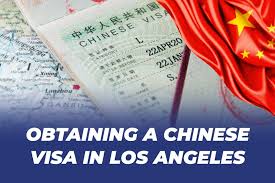Before applying for a how to get a chinese visa, it is important to know the different categories available. China issues several types of visas depending on the purpose of travel. The most common include the L visa for tourism, the M visa for business, the X visa for students, and the Z visa for employment. Each type has its own requirements and validity periods, so applicants need to carefully choose the one that matches their needs. For example, a tourist visa may only allow short-term stays, while a student visa may grant entry for months or even years depending on the course duration.
Applicants should also understand that multiple-entry and single-entry visas exist. A single-entry visa allows one visit, whereas a multiple-entry visa permits several visits within a specified timeframe. Knowing these categories helps applicants avoid mistakes that could cause delays or rejections. Some people may also require specialized visas, such as diplomatic or family reunion visas, which come with additional documentation. Researching in advance and confirming the right category with the Chinese embassy ensures that the application process starts on the right track.
Preparing the Required Documents
Once the appropriate visa type is identified, gathering the necessary documents is the next critical step. The primary requirement is a valid passport with at least six months of validity remaining and several blank pages for visa stamps. Applicants must also complete the Chinese visa application form, which is available online or through the embassy. A recent passport-sized photo is usually required, and it must meet specific guidelines regarding size and background color. Missing or incorrect photos can delay the process, so it is best to double-check specifications.
Additional documents vary depending on the visa type. For tourists, flight bookings and hotel reservations are commonly requested. Business travelers may need an official invitation letter from a Chinese company. Students applying for the X visa must present admission letters from recognized Chinese universities, while those applying for a Z visa need work permits issued by the Chinese authorities. Proof of financial stability, such as bank statements, may also be required to demonstrate the ability to support oneself during the stay. Being thorough and organized when preparing documents reduces the chance of rejection and speeds up processing.
Submitting the Application at the Embassy or Visa Center
After preparing the documents, the application must be submitted to a Chinese embassy, consulate, or an authorized visa application center. Most countries have designated visa centers where applicants can book appointments in advance to avoid long waits. During submission, applicants present their documents, fill out any additional forms if needed, and pay the visa fee. Payment methods differ by location, so it is wise to check whether cash, card, or online payments are accepted before the appointment.
Applicants may also need to provide biometric data, such as fingerprints, depending on the requirements in their country. Some applications require interviews, especially for long-term or work visas, where applicants may be asked about their travel plans or employment details. Processing times typically range from four to seven working days for standard services, but expedited options are available at a higher cost. Keeping receipts and application reference numbers is important, as these allow applicants to track the progress of their submission. By following the embassy or center’s instructions carefully, the submission step can be completed smoothly without unnecessary delays.
Receiving and Checking the Visa
Once the application is processed, applicants can collect their passport with the visa attached or have it mailed to them if the service is offered. It is crucial to carefully review the visa once it is issued. The visa will display the type, duration of stay, number of entries, and validity period. Any mistakes, such as incorrect dates or entry permissions, should be reported immediately to the issuing authority. Overlooking these details may result in complications upon arrival in China.
Travelers must also be aware of the entry requirements once they land in China. A visa does not guarantee entry if border authorities find inconsistencies in travel plans or documents. Visitors should carry copies of hotel bookings, return flight tickets, or official invitation letters to present upon arrival if asked. For students and workers, registration with the local public security bureau is usually mandatory within a certain number of days after entry. Being informed about these post-approval requirements ensures that the visa remains valid throughout the stay and prevents legal issues.
Tips for a Smooth Application Experience
Applying for a Chinese visa can feel overwhelming, but following practical tips makes the process much easier. Planning ahead is one of the most important steps, as last-minute applications increase the risk of errors or missed deadlines. Starting the process at least one to two months before the intended travel date provides enough time for gathering documents and resolving unexpected issues. Consulting official embassy websites for up-to-date requirements is also essential since rules may change depending on global situations or bilateral agreements.
Applicants may also consider using professional visa services if they are unsure about requirements or lack time. These agencies assist in checking documents, scheduling appointments, and submitting applications, which reduces the chance of rejection. However, applicants should ensure the agency is reputable and officially recognized. Another helpful tip is to keep multiple copies of important documents such as passports, invitation letters, and travel itineraries. Digital backups stored securely can be useful in emergencies. By preparing carefully and staying informed, applicants can successfully obtain a Chinese visa and focus on enjoying their journey.

